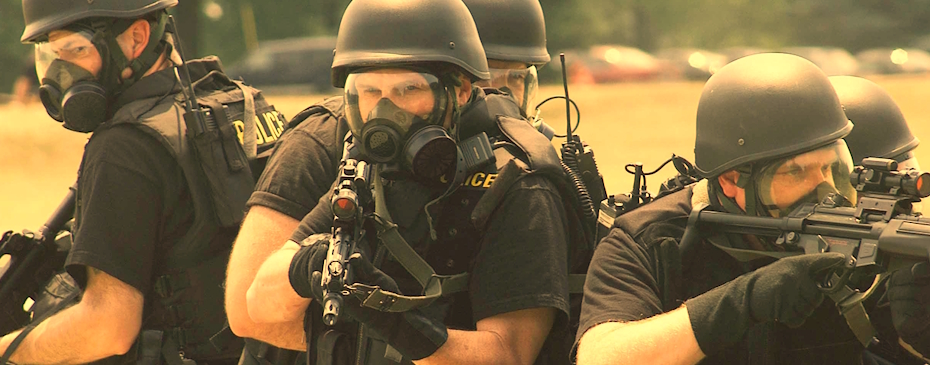From Shoulder Carry to Combat Ready: How the 3-Point Sling Redefined Rifle Positioning
Article by: AP @Tradecraft USA

In the tactical world, the way a rifle is carried is nearly as important as the rifle itself. For decades, the standard carry method was simple: sling the weapon over the shoulder and move out. That approach worked for patrols and marching formations, but it often fell apart in modern, high-tempo environments—especially when confined spaces, vehicle operations, and rapid transitions came into play.
Enter the 3-point sling, a design that radically shifted how operators carried their weapons. More than just another strap system, the 3-point sling helped push the rifle from the shoulder to the chest, laying the groundwork for modern sling tactics and firearm readiness.
The Legacy of the 3-Point Rifle Sling
The 3-point sling concept became popular among military and tactical users in the 1990s as a response to the limitations of traditional 2-point slings. Tactical professionals recognized the need for a sling system that could offer hands-free retention, enhanced muzzle control, and rapid accessibility—especially in high-stress environments.
This innovation led to early adoption by special operations forces, particularly those operating in maritime, urban, and high-mobility scenarios, where traditional carry methods often fell short.
From Over-the-Shoulder to Chest-Centered Twelve O'clock Carry
Before the 3-point, most rifles were carried slung over the shoulder or across the back. While this kept the hands free, it left the weapon slow to deploy, awkward to manage in tight quarters, and prone to swinging or snagging. The transition to chest-mounted carry made possible by the 3-point design solved many of those problems:
- The rifle sat high and centered on the chest, allowing for rapid presentation.
- The weapon stayed tight to the body, reducing swing during movement.
- It positioned the muzzle in a safer direction, particularly in close team formations.
This carry style became known as "combat ready" or "front-slung" now standard practice among modern tactical teams and military units.
Why Special Operations Adopted It First
Special operations units aren’t quick to adopt gear unless it solves real-world problems. The 3-point sling appealed because it addressed specific needs in dynamic, high-risk environments:
Hands-Free Weapon Retention
Whether fast-roping, climbing ladders, securing prisoners, or treating casualties, operators needed to drop their weapon without dropping it. The 3-point allowed the rifle to remain secure and centered—even without a hand on it.Speed
In high-stress, fast-paced situations, every second counts. The 3-point sling enabled operators to bring their rifle into action quickly from the chest position—minimizing reaction time and keeping the weapon ready during movement or transitions.Control in Confined Spaces
In close quarters—like shipboard compartments, aircraft cabins, or tight urban rooms—muzzle awareness is everything. Chest-centric carry gave the operator better control of muzzle direction and prevented accidental flagging of teammates.Shooting Support
With proper adjustment, the sling could add stability during aimed fire, acting as a tensioning brace for supported positions or awkward shooting angles.
The Tradeoffs: Complexity and Safety Concerns
But the 3-point wasn’t without its issues. Its web of straps, while secure, could easily snag on gear, wires, or parts of the rifle. New users often struggled with the setup, and under stress, that confusion could be dangerous. In rare cases, the sling could slip into the trigger guard, raising concerns about accidental discharges. The design also made shoulder transitions difficult and slow, and most early versions lacked quick-detach options, making it hard to disconnect the weapon in emergencies. These limitations eventually spurred a reevaluation of sling design, especially as tactical gear evolved toward modularity and speed.
The Evolution: Modern Slings and Positioning
The benefits of the 3-point system live on in today’s slings—but with refinements. Adjustable 2-point slings like the Blue Force Gear Vickers Sling, Viking Tactics (VTAC) Sling, and Magpul MS1 deliver quick length changes and chest-centric carry without the clutter. Quick-detach mounts allow fast reconfiguration or emergency release. Hybrid systems blend stability with mobility, while single-point slings offer maximum flexibility for shoulder transitions, albeit with less retention. These modern designs carry forward the combat-ready positioning pioneered by the 3-point while eliminating its major drawbacks.
Why Some Still Use the 3-Point Today
Despite falling out of favor, the 3-point still has its place. Corrections officers and security teams value its tight retention in crowded or high-risk environments. Some military personnel stick with it due to familiarity and ingrained muscle memory. And for long-duration carry—such as static posts or extended patrols—it still offers unmatched comfort and support.
Final Thoughts: Positioning Over Perfection
The 3-point sling may not be the dominant design today, but its influence is everywhere. It redefined how we carry rifles, moving the weapon from a loose shoulder strap to a combat-ready position across the chest at the twelve o’clock, where it could be deployed instantly, retained safely, and controlled easily.
Modern slings have improved on the concept, but the 3-point’s legacy is clear: when the mission demands readiness and control, rifle positioning matters—and that evolution started with the 3-point sling.
**Note – If you would like to be notified when the next article is published, type "NOTIFY ME" in the subject line and email us at admin@tradecraftusa.com**




